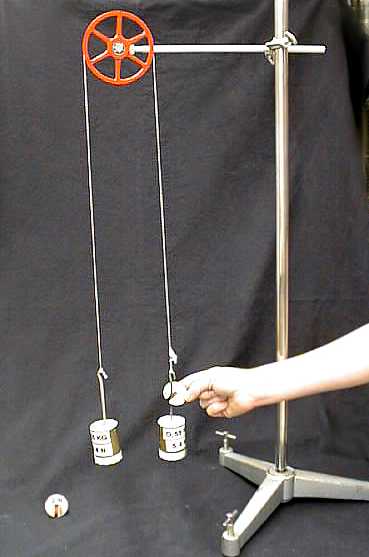
Force, Mass, Acceleration: Newton's Second Law
Atwood's Machine
PIRA Class: 1G10.40

Force, Mass, Acceleration: Newton's Second Law
Atwood's Machine
PIRA Class: 1G10.40
 Purpose
Purpose
To determine the acceleration of a system that experiences a
constant applied force
Description
The acceleration of a system in motion is measured using two
slightly unequal masses hung over a "frictionless, massless" pulley.
1. Hang (and balance) the two sets of masses on the pulley
string
2. Add a minimal mass to one side of the system - just enough
until gravitational forces on the system overcome the moving friction of the pulley (i.e.,
system will move with a constant velocity when given a small nudge to overcome pulley's
static friction)
3. Transfer a small mass from the none friction mass side to
the friction mass side to start the system accelerating slowly, making time measurements
for the rate of fall possible.
Note this difference in mass between the two sides, the total
mass of the system, the time and the distance that the system falls through. One could
compare the measured values of acceleration (using a known value for the acceleration due
to gravity, 'g') or determine the local value for 'g'
Equipment
Large Pulley, String, Atwood masses
Support Equipment
Rods & clamps, Mass Hangers